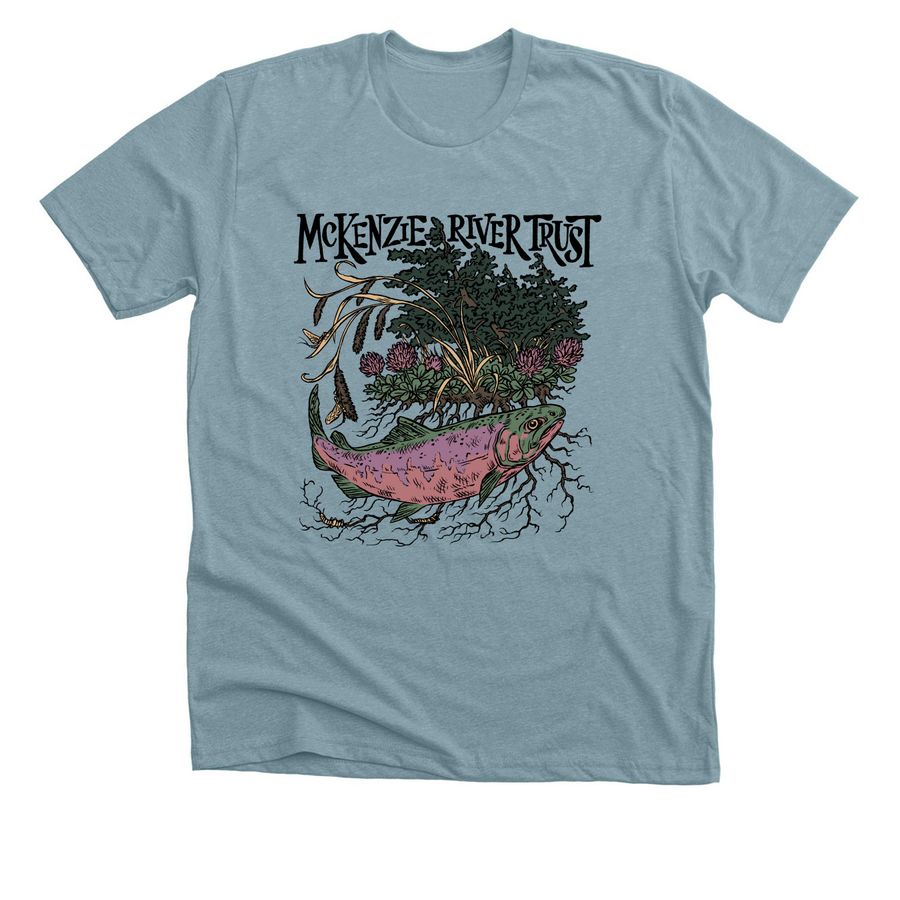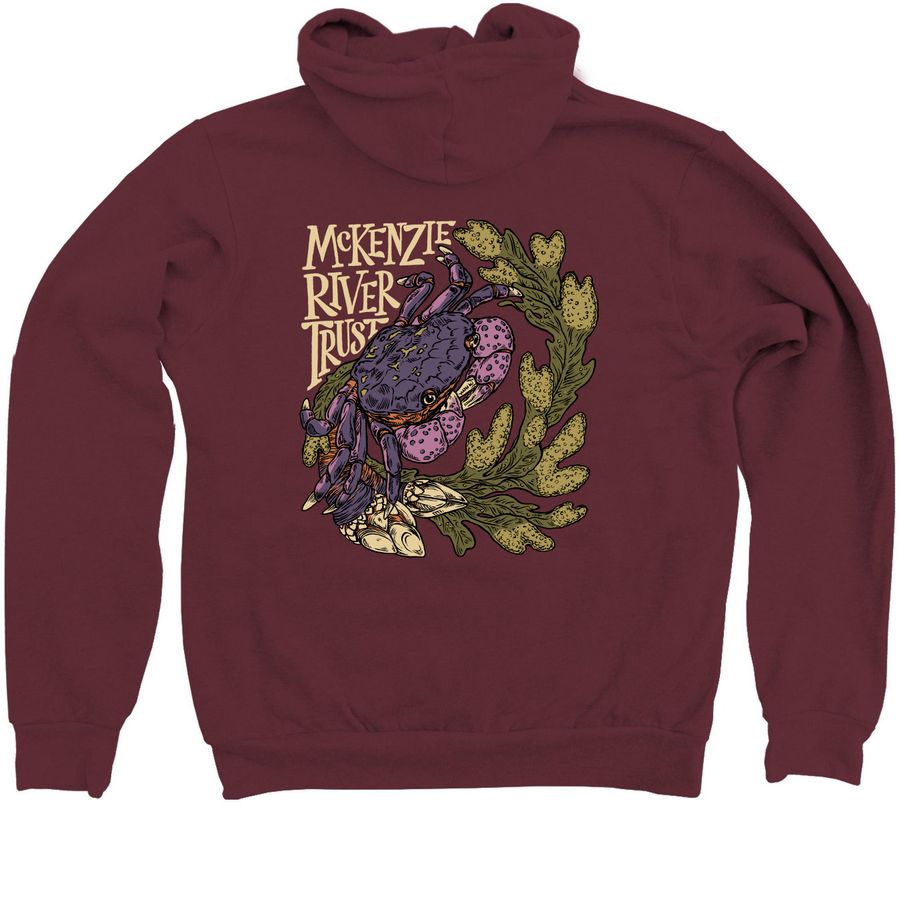Ferguson Creek
Easement
The Ferguson Creek Conservation Easement was purchased by McKenzie River Trust to permanently protect 62 acres in the Long Tom watershed.

“Farming and conservation have both been part of our plans for this property since we bought it,” said Trey Hagen. “The paradigm used to situate farming and conservation efforts on opposites sides of the spectrum. Today, property owners like us who consider land management practices for the long haul see conservation and farming coexisting and proving beneficial to each other.”
Trey Hagen
Meet Ferguson Creek
Coming Home in the Long Tom Watershed
When Trey and Tammie Hagen spotted the For Sale sign in front of the farm that would soon become their home something clicked. “We had to do it,” said Trey Hagen, relishing the memory of the moment they decided to purchase the scenic 238-acre property. Hagen had grown up just half a mile away. After spending many years traveling throughout the US and abroad, buying this piece of land along Ferguson Creek in the Long Tom Watershed was a homecoming.
“I’ve always felt Ferguson Creek was really special,” said Hagen, who still has family that lives close by. “When I was a kid, this creek was our entertainment. We would spend our afternoons fishing, building miniature dams, and finding the best swimming holes. Now my son Cormac will have that opportunity, too,” Hagen said.
The creek the Hagen family loves will be preserved for future generations thanks to an agreement with the McKenzie River Trust.
In 2011, the Ferguson Creek conservation easement was established to protect 64 acres of vital habitat for fish and wildlife on the Hagen property. The easement contains diverse native forests and emergent wetlands. This habitat may benefit declining species, including the greater sandhill crane, western bluebird, pileated woodpecker, northwestern pond turtle, red-legged frog, and western brook lamprey, all considered species of concern by the Oregon Department of Fish and Wildlife. The land is also within the Pacific Flyway, one of several major routes across North America for migrating waterfowl. The North American Wetlands Conservation Act (NAWCA), a grant program operated by the U.S. Fish and Wildlife Service, provided funding for the easement.
Sustaining Partnerships
The Long Tom Watershed Council (LTWC) is a key partner for the project, providing technical assistance and funding for research and long-term restoration. Thanks in part to grants from the Oregon Watershed Enhancement Board, Meyer Memorial Trust, and ODFW Restoration & Enhancement Program, LTWC is investigating native fish populations and actively improving habitat for native fish on the Hagens’ property and another private property along Ferguson Creek by removing invasive plants, replanting native vegetation, and placing large wood in the stream. Future work will likely include enhancing the beautiful wet prairie remnants on the property.
“This project is a great example of how the watershed council and land trust can offer services to meet landowner goals for their property,” said Dana Dedrick, Watershed Coordinator for the Long Tom Watershed Council.
The Ferguson Creek property is very scenic, offering a glimpse of what homesteads looked like in the early settlement days of the Willamette Valley. Along with an intact, meandering stream, the property also contains hay fields and Confluence Farms, a three-acre transitional organic blueberry farm operated by the Hagens.
Expanding Protections through a Working Lands Easement
In February 2025, the couple expanded protection on their property by selling an additional working lands conservation easement, which permanently protects 150 acres of riparian habitat and working lands, including roughly 45 acres of farmland and 50 acres of timber. “Our choice to pursue this form of land protection goes beyond preserving the farm for our children,” shared Trey.
“Keeping the land in its current state with a mix of wilderness and working lands feels important. Living here, I’ve seen farmland all over the state be reduced to 15 or 5-acre parcels. Larger tracts like this are becoming few and far between, and this easement is a way to keep the land together so that there will always be a future for local agriculture here.”
The Hagen’s working lands conservation easement was the first private easement to be funded through the Oregon Agricultural Heritage Program (OAHP), which is administered through the Oregon Watershed Enhancement Board (OWEB). The program aims to increase the economic viability of Oregon’s agricultural operations, enhance fish and wildlife, water quality, and other natural resources on Oregon’s working lands, and protect working lands against conversion and fragmentation. OWEB’s Executive Director Sara O’Brien celebrated the transaction, “OWEB is proud to partner with the McKenzie River Trust and the Hagen’s on this multi-benefit project. Oregon Ag Heritage Program funds are an outstanding opportunity to invest in both working lands and fish and wildlife habitat.”
This intertwined relationship between working lands and wildlife habitat is motivating for Trey and Tammie. “Everyone comes into property ownership with different intentions,” Trey notes. “You have to ask, ‘What are your values?’ This land feels like an evolution of values for us. Since the first conservation easement in 2011, we’ve steadily seen the property’s health improve. Today, we have beavers, elk, coyotes, bears, bobcats, and a heron rookery all right here on the farm. We’re confident that this working lands easement will bring similar benefits to the land. We’re grateful to the Trust and the OAHP program for helping us protect this special area and ensure that Oregon’s working lands continue working for small farmers like us today and for generations to come.”






